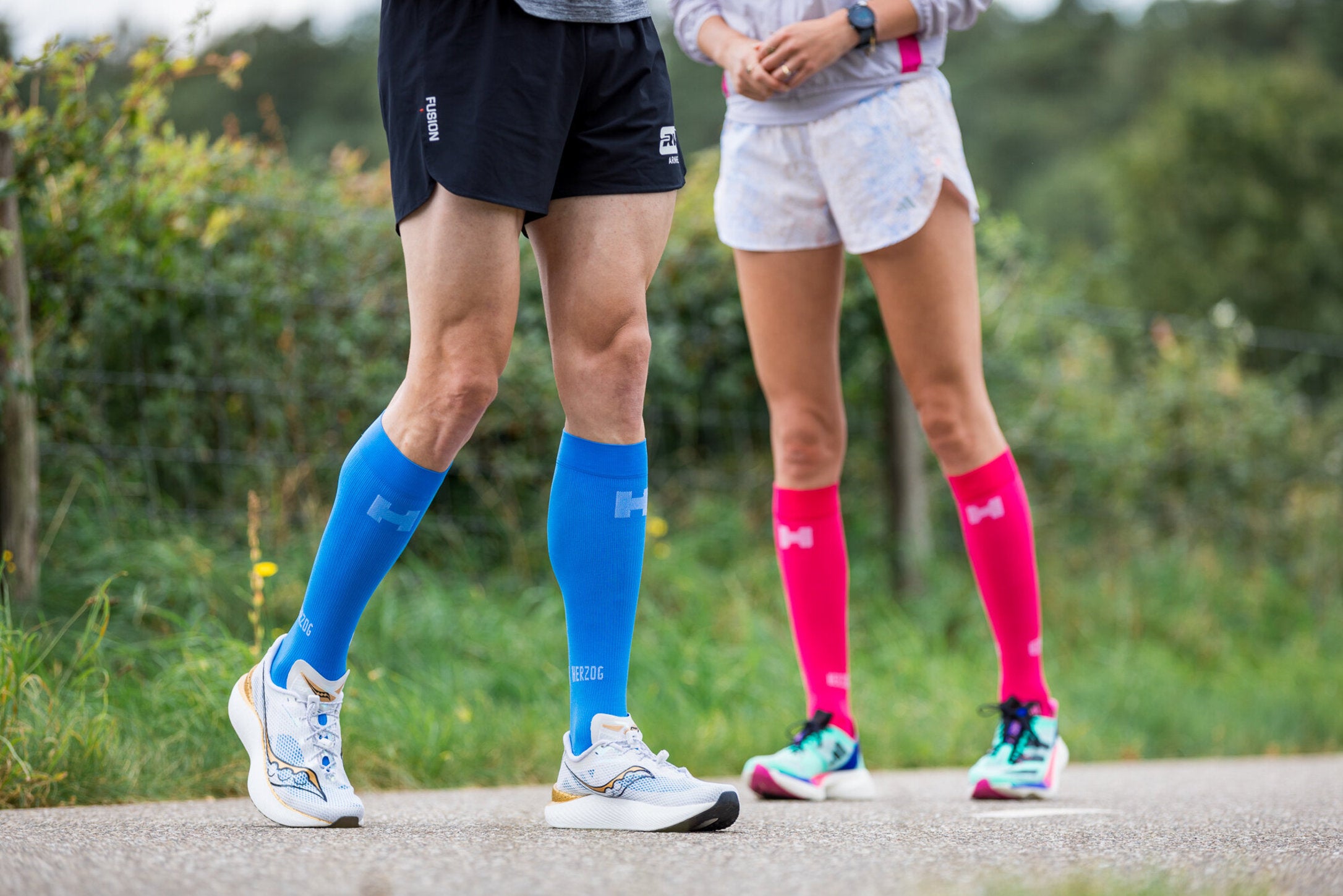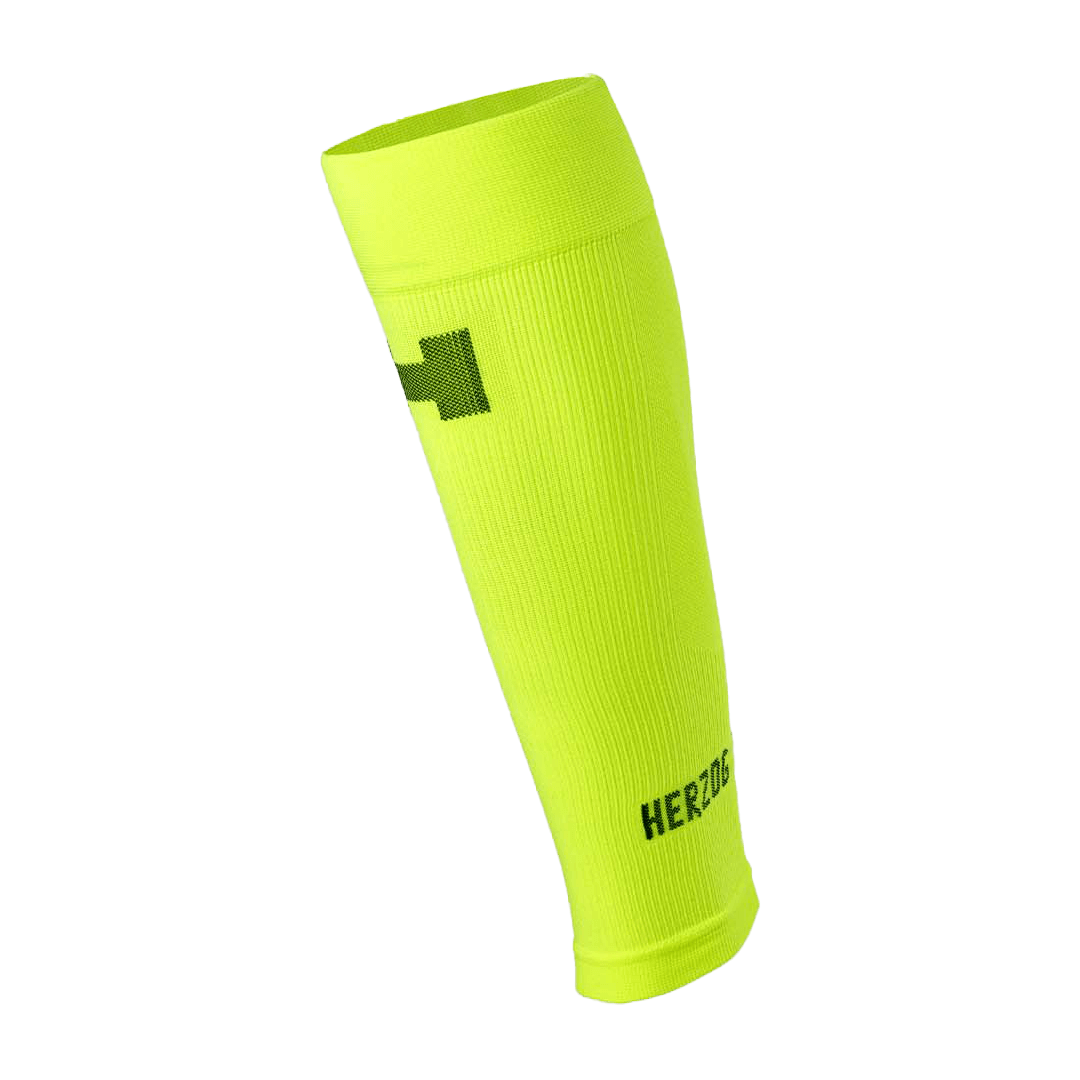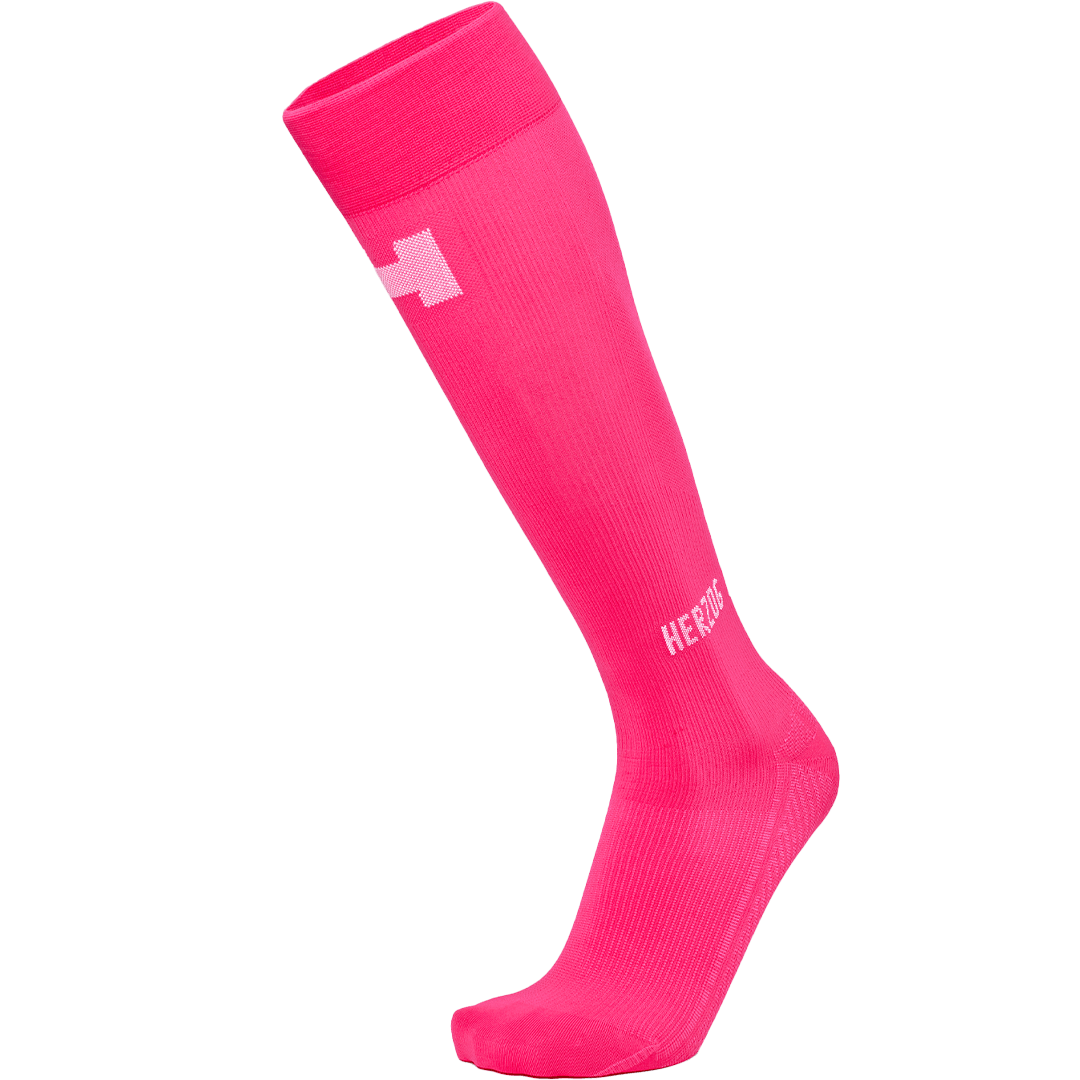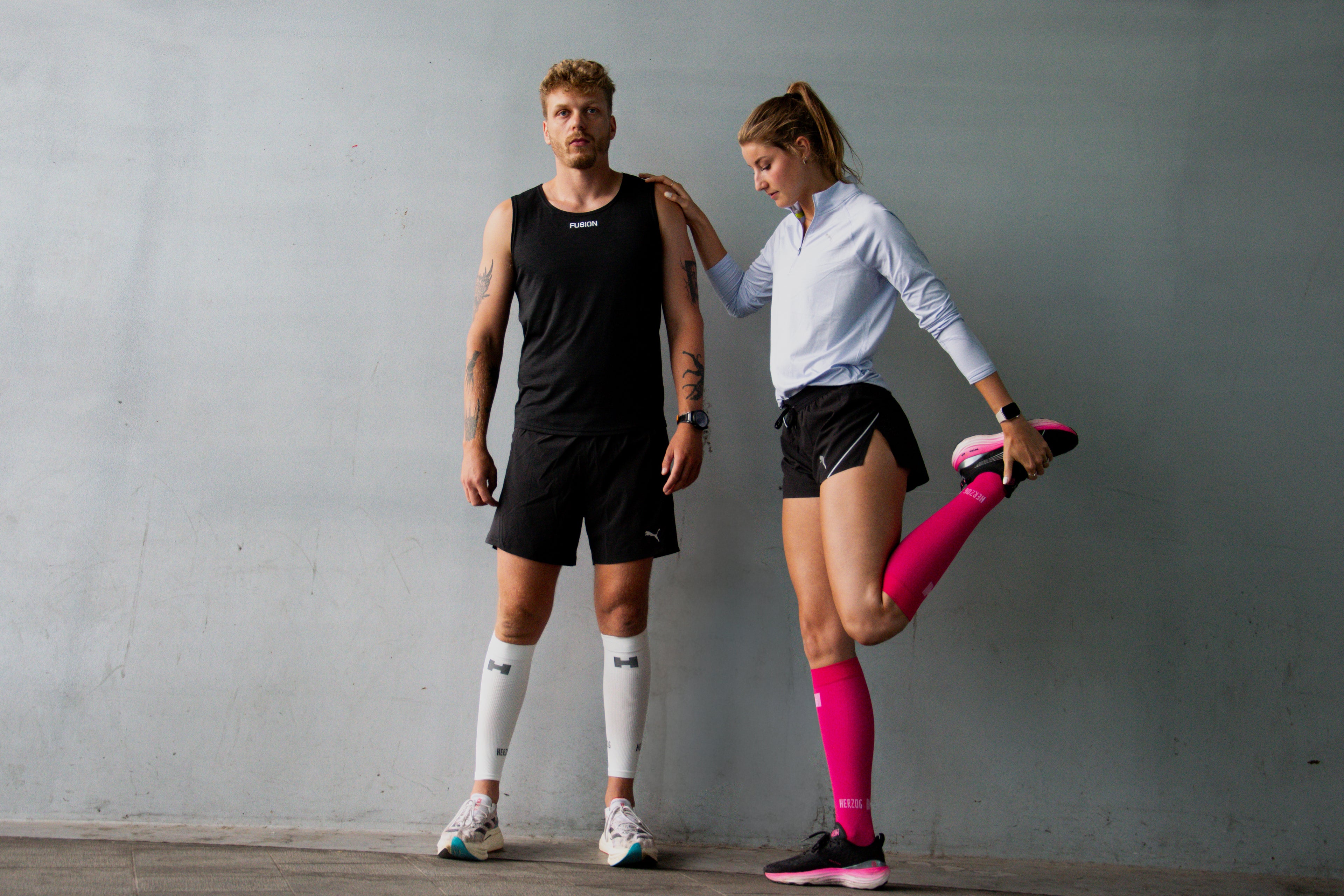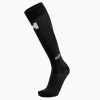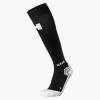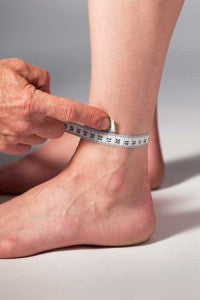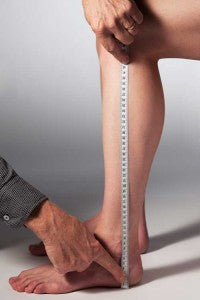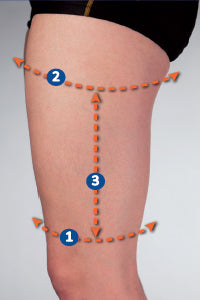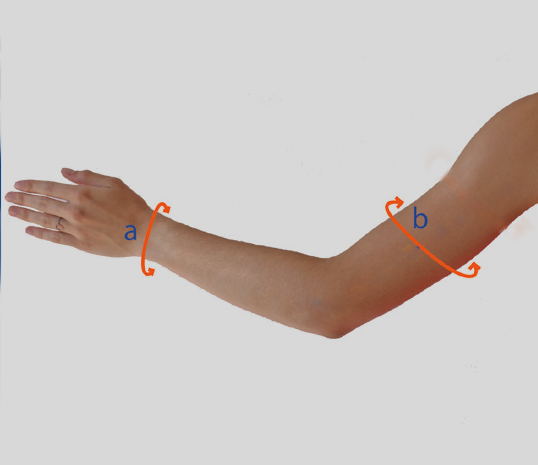The recovery period for shin splints varies from person to person. The average recovery period is very generous, ranging from 4 to 12 weeks. The duration of pain depends on the severity of the injury, how quickly you rest, and how quickly you allow your muscle to recover. For a quick recovery, it's important to:recognize symptoms in timeand take action.
What are the causes of a shin splint?
You will probably experience a stabbing pain in the lower part of your shin. This pain often occurs where the muscles attach to the bone.
Shin bone complaints mainly occur in athletes who regularly run and jump. Sports such as volleyball, handball, running and walking put a lot of strain on the shin bone.
Factors that increase the risk of shin splints include:
- Overload due to repetitive movements and exercising for too long or intensively
- An inefficient running technique
- Weak calf muscles that cannot handle the sports load
- Overweight
- Bad footwear
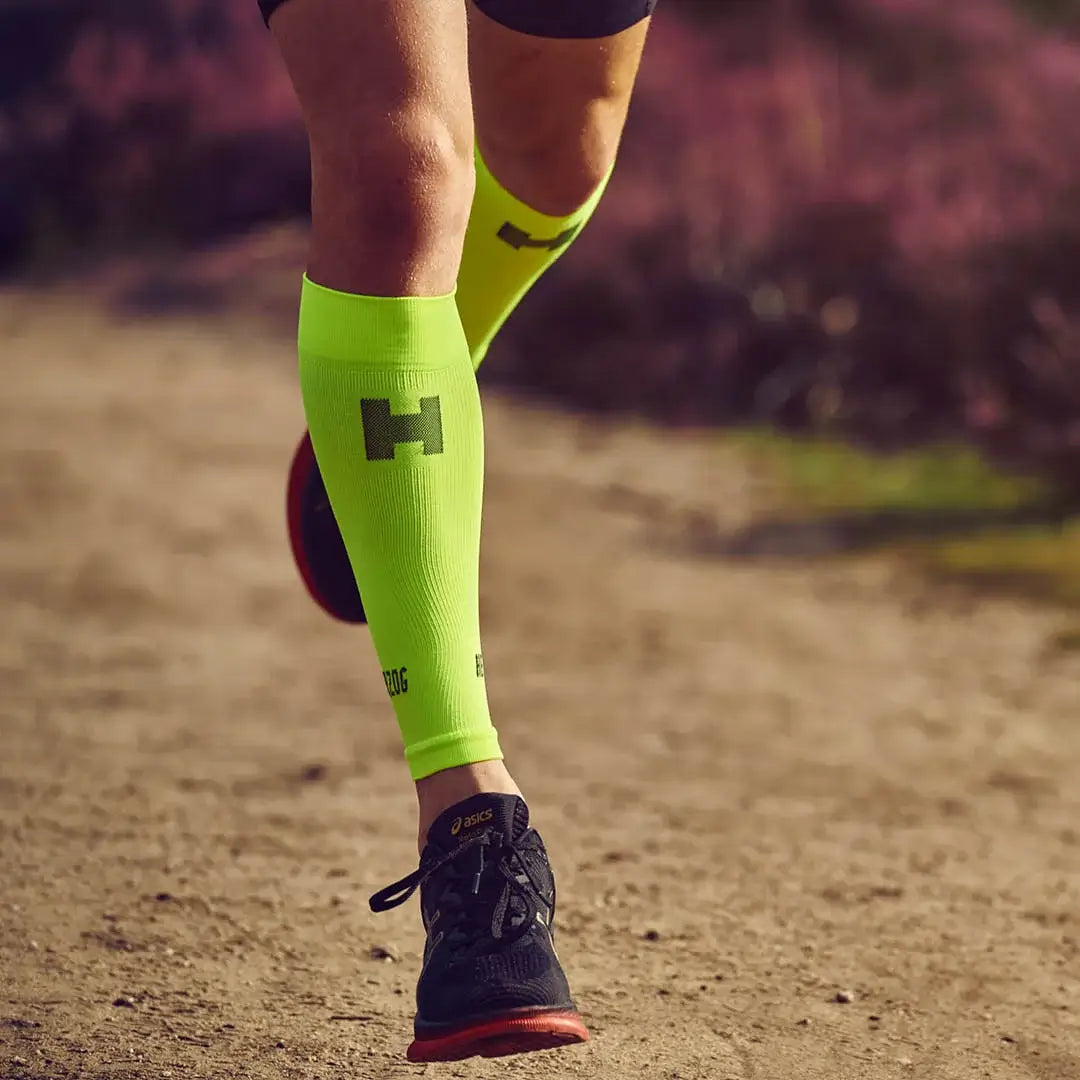
What should I do if I have a shin splint?
With a good structure of your training and muscle strengthening exercises for the calf muscles, you can get a grip on the recovery from your injury. Wearing Herzog PRO Sport Compression Socks or Tubes significantly accelerates recovery. These socks provide high compression, which limits the mobility of the relatively heavy calf muscle. This reduces the shock load and the pulling force on the periosteum of the tibia, where the muscles attach to the bone.
Shop compression stockings for shin splints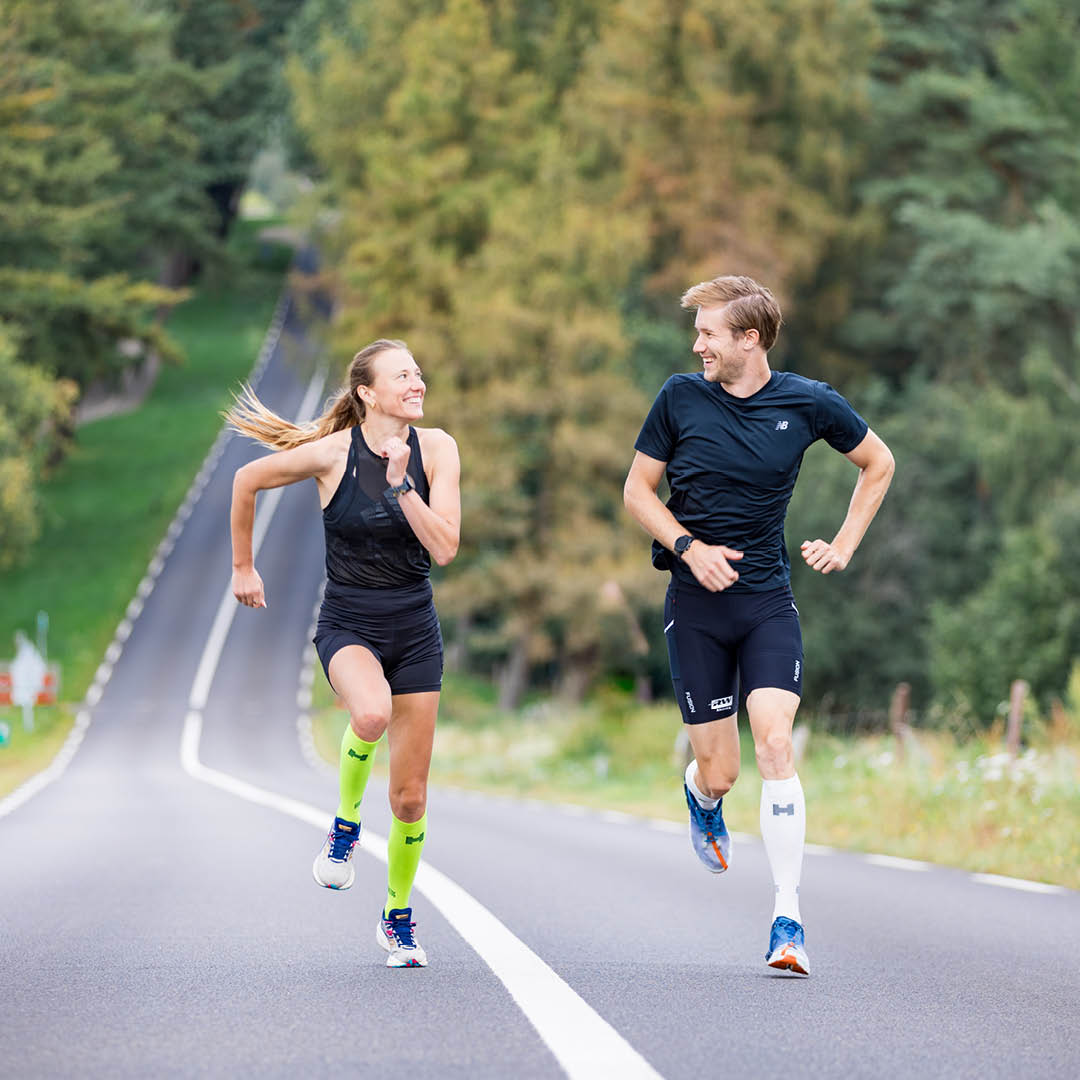
How do I prevent shin splint?
Have you just recovered or do you want to prevent shin splints? You can partly influence this yourself with the following steps:
Wear the right clothing: This definitely includes compression socks or tubes. The pressure that the Herzog PRO Compression Socks exert on your lower legs offers several benefits. They improve blood circulation, allowing waste products to be removed more quickly. In addition, the socks have a shock-absorbing effect, which drastically reduces muscle damage.
2. Choose the right shoes: Always have them fitted by a specialist to ensure that they fit properly and provide the right support.
3. Make sure you warm up properly: Prepare your muscles for the effort and avoid doing too much too quickly.
4. A good cool-down: Make sure your muscles don't cool down too quickly after training, which helps prevent injuries.
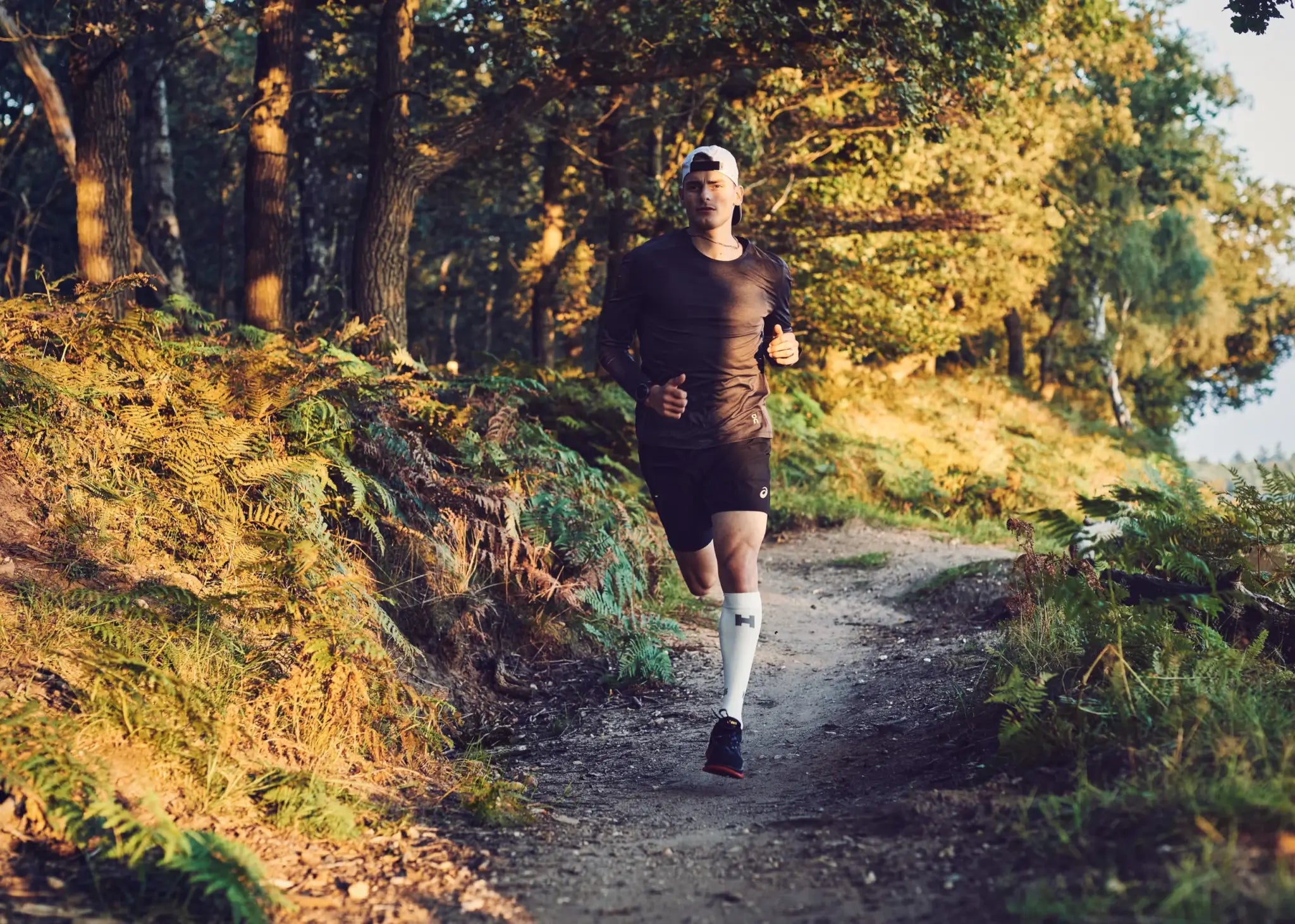
How can cross-training help in the management and prevention of shin splints, and what types of activities are recommended?
Cross-training allows individuals to engage in different types of physical activities that reduce the repetitive impact on the shins while still maintaining overall fitness. This variation helps to prevent overuse injuries like shin splints by balancing the stress placed on different muscle groups and joints.
Recommended cross-training activities:
- Swimming: Provides a full-body workout without any impact on the legs.
- Cycling: Offers a cardiovascular workout with reduced stress on the shins.
- Elliptical Training: Low-impact exercise that mimics running movements.
- Rowing: Engages multiple muscle groups with minimal leg impact.
- Yoga: Enhances flexibility, strength, and balance, reducing the risk of injuries.
- Strength Training: Builds muscle strength and endurance, particularly in the lower body, to support running and other high-impact activities.
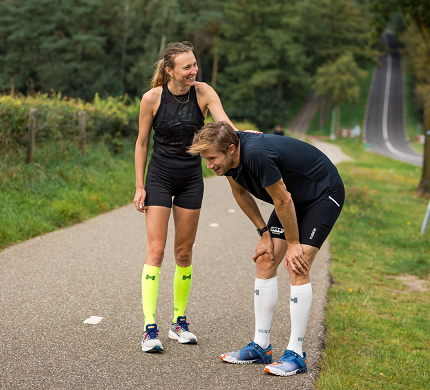
Shin splints and other common injuries
Shin pain is common among runners, but often part of a broader overload pattern. Explore our full injury overview and discover how compression supports both prevention and recovery.
→ Discover more injuries

